Best guitar pedals to buy in 2021: 12 best unique and experimental pedals
The best pedals for noise, experimentation and transformative sound design.

Are you burnt out on low-gain overdrive pedals? Do you long for abrasive soundscapes, torturous drones and noises resembling anything but a guitar? Then this is the list for you. Abandon all blues-rock, ye who enter here: these effects pedals could empty out a local open mic faster than a bucketful of exotic poisonous snakes. Some are just about as pricey, too.
Let’s dive in.
- READ MORE: How to buy a vintage Gibson thinline
What makes a guitar pedal unique?
If you’ve been in the stompbox world for any amount of time you’ll no doubt have come across one word in particular: clone. Many pedals exist as a direct successor to an established circuit, with the builder’s own tweaks setting it apart from its inspirer. This is by no means a bad thing – those core circuits are ubiquitous for a reason, and having a vague idea of how a pedal will respond before you buy can be very helpful indeed.
But the sonic safety that comes with these set circuit baselines can be limiting to some, and so some builders have taken it upon themselves to throw out the rulebook and attempt to create a circuit that sounds like nothing else – that’s the territory we’ll be exploring with this list.
That doesn’t mean that none of these effects have any grounding in what came before, however. Some are truly unique takes on a given effect – from reverb and delay to and drive pedals – they just feel as though they dropped in from an alternate dimension.
The best experimental guitar pedals to buy in 2021 at a glance:
- Gamechanger Audio Light Pedal
- Earthquaker Devices Rainbow Machine
- Rainger FX Minibar
- Montreal Assembly Count To Five
- Hologram Electronics Microcosm
- Dr Scientist BitQuest
- Empress ZOIA
- Bananana Effects MANDALA
- Alexander Pedals Superball Kinetic Modulator
- Death By Audio Total Sonic Annihilation 2
- Snazzy FX Tracer City
- ZVEX Fuzz Probe
Gamechanger Light Pedal
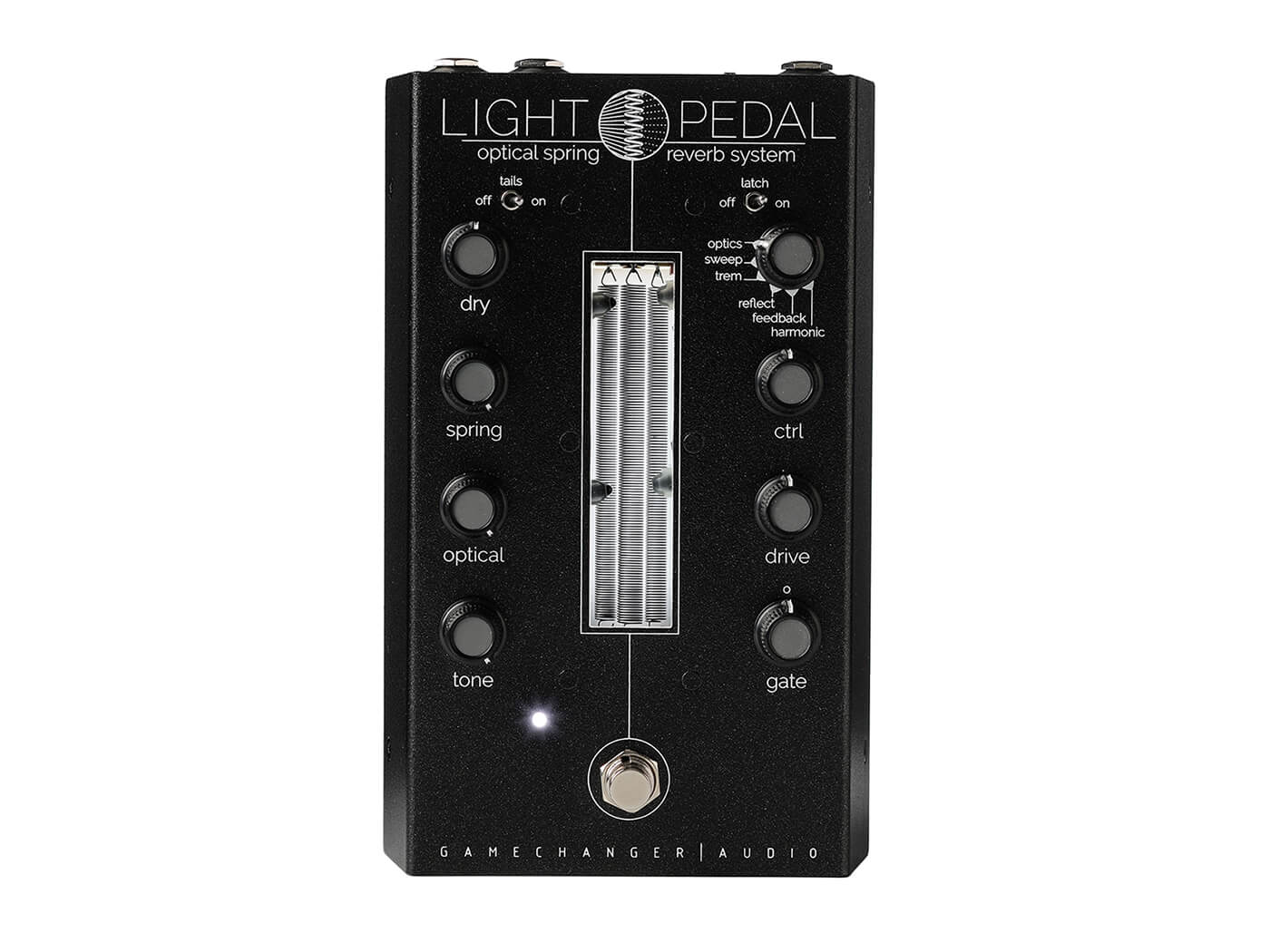
+ Beautiful design
+ Makes a horrifying sound when kicked on purpose
– Makes a horrifying sound when kicked accidentally
Spring reverb is one of the oldest effects there is – using a transducer linked up to an audio signal to vibrate a spring, and reintroducing the resulting reverberation back into the signal for a drippy, bright reverb. It’s a classic sound. So why is the Light Pedal on this list?
Firstly, because it uses optical sensing to detect the movement of the spring (alongside traditional methods), resulting in a reverb sound like no other, and secondly, its mode switch mixes things up even more with two flavours of tremolo, a lo-fi delay, self-oscillating feedback and harmonic drive. Combined, these result in an entirely fresh take on analogue reverbs.
Sure, it’s big, heavy and makes a thunderous racket if you accidentally kick it – but if you’re in the market for the sort of noises this thing can make, we’re assuming those aren’t problems.
Price: $349/€289
Description: Multi-mode spring reverb pedal, made in Latvia
Controls: Dry, spring and optical reverb levels, reverb tone, six-way mode switch, mode-dependent control, drive, gate; switches for reverb trails on/off and latching on/off
I/O: Mono ins and outs, Expression pedal input
Bypass: Buffered bypass with switchable trails
Read our review of the Gamechanger Audio Light Pedal here.
Earthquaker Devices Rainbow Machine
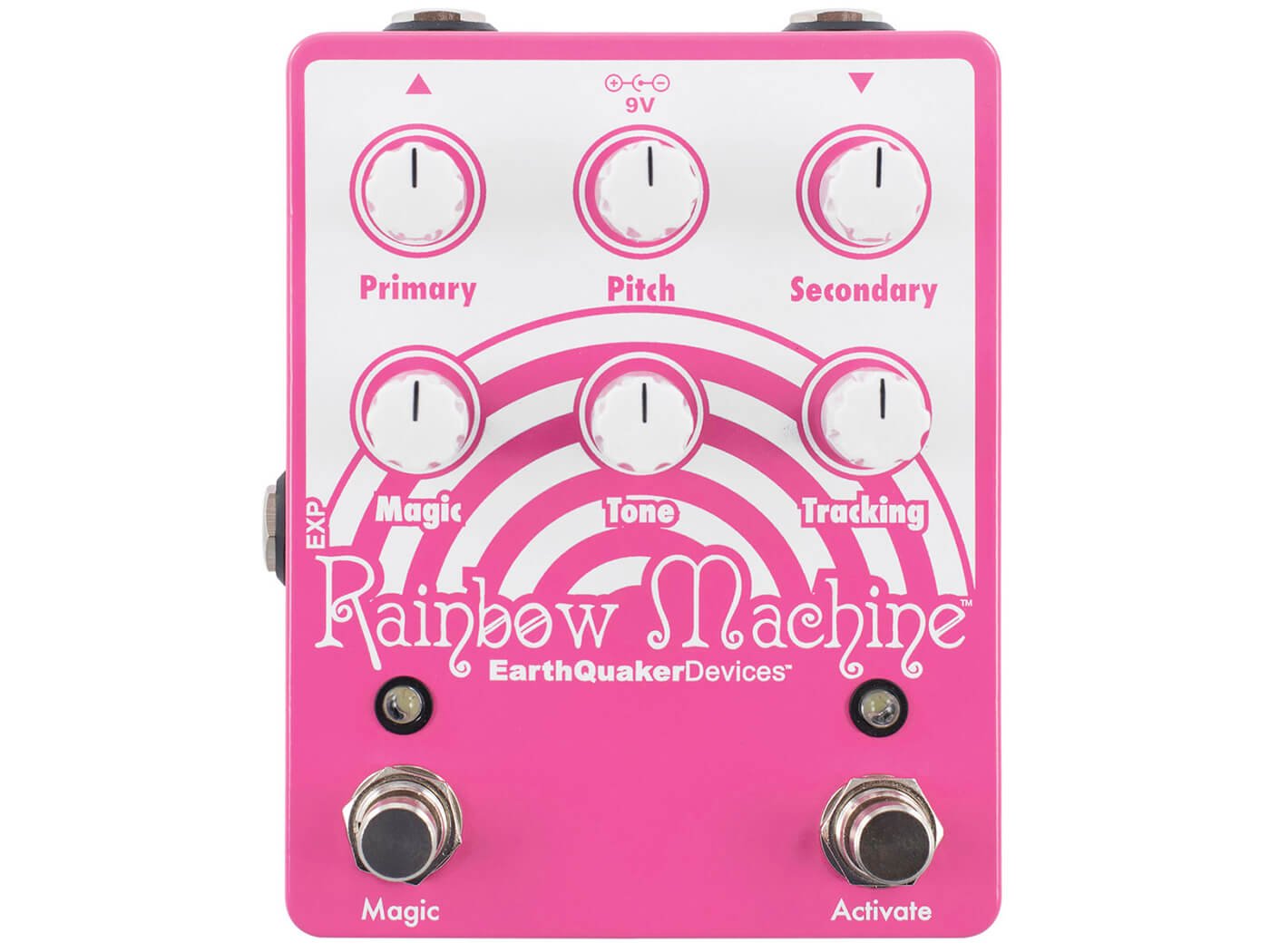
+ V2 features upgraded tracking and polyphony
+ Surprising amount of control despite wild sounds
– Pitch-gliding ‘magic’ setting might be too out-of-control
An essential inclusion on any list of outré pedals, the Rainbow Machine is famously unclassifiable, divisive and far cheaper than a lifetime supply of hallucinogens and a Leslie speaker cabinet.
Roll a dice to determine which category you’ll find it in on a retailer’s website, because inside here is a polyphonic, pitch-shifting chorus/delay machine that basically does its own thing, especially with the Magic control engaged. Once this footswitch is pressed, the pitch can glide up or down – though not in a smooth, whammy-like way. EQD describes it as “wild pitch take-offs and descends, chaos chorusing, shrieks, groans, gurgles, wizard-blessed wizardry, signal transformation, imminent destruction, and other general mayhem” – a totally fair description.
Price: $/�£229
Description: Pitch-drifting chorus/delay, made in USA
Controls: Knobs for primary and secondary modulation, ‘magic’ knob and footswitch, knob for overall pitch adjustment of wet signal, tracking control for ‘lag time’
I/O: Mono ins and outs
Bypass: True bypass with dual-mode momentary and latching footswitches for both magic and bypass
Rainger FX Minibar
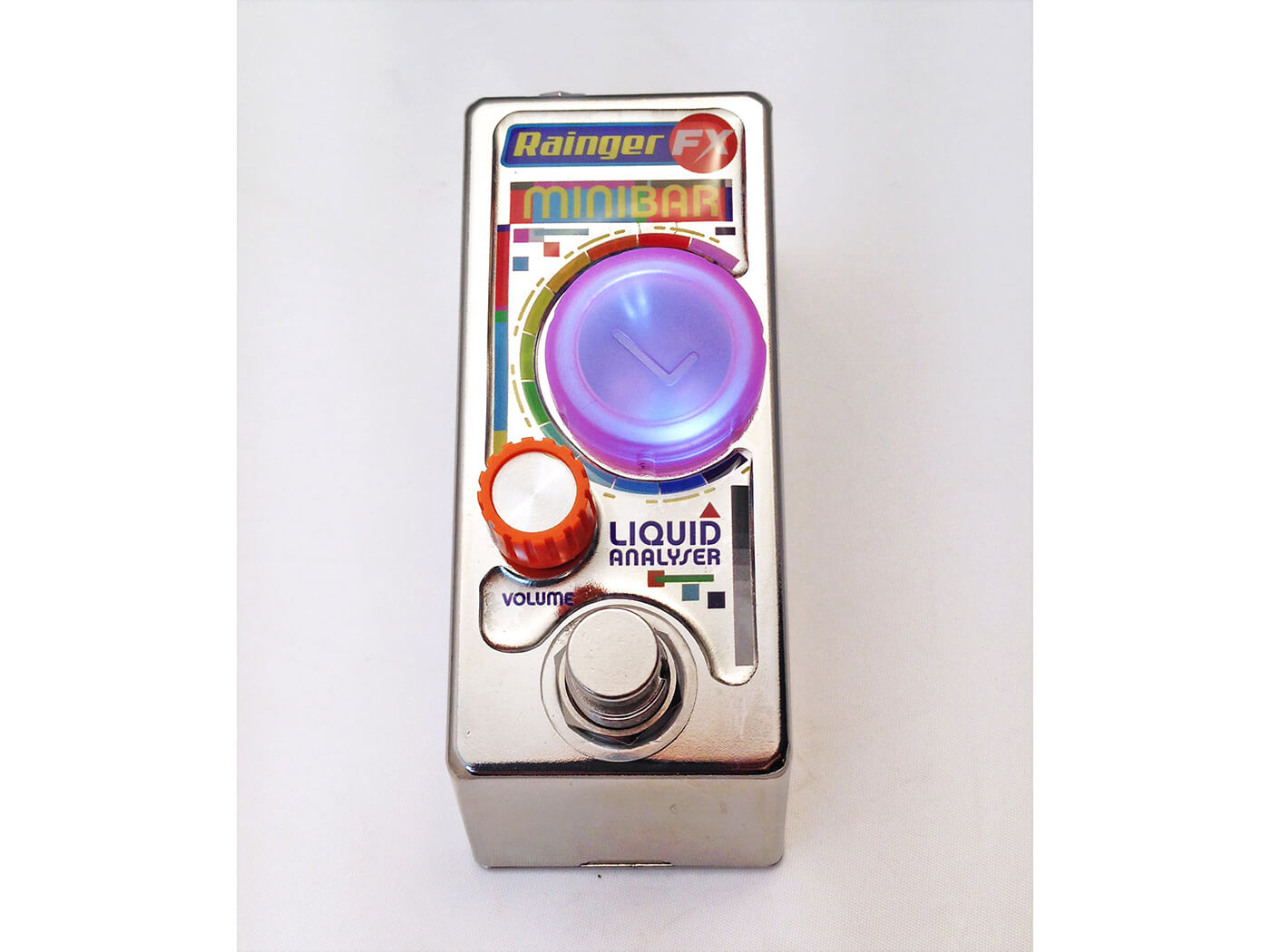
+ Affordable for such an odd pedal
+ Lots of usable sounds despite the oddness
– High-maintenance
It’s a scenario that strikes terror into the heart of any effects-pedal aficionado. An audience member is jostled, their plastic pint glass of overpriced lager thrown into the air, landing on your carefully assembled pedalboard – and your signal dies. Or, it would have, but luckily you were using the Rainger FX Minibar, and the introduction of a new liquid just gave you an even more exciting overdrive tone.
OK, it’s an unlikely solution to liquid disasters because it’s actually quite a small pedal and you’d need to leave the lid of the small chamber open for that to work, but in any case the Minibar is truly unique – utilising a liquid analyser to change the overdrive sound based on the liquid’s refracting characteristic. Some might view it as gimmicky, but to others, it’s a way of truly separating their sound from the pack.
Price: $149/£135
Description: Overdrive pedal that derives its tone from the liquid you pour into a sealed chamber
Controls: Volume
I/O: Mono ins + outs, the liquid chamber is also an input if you think about it
Bypass: True bypass
Montreal Assembly Count To Five
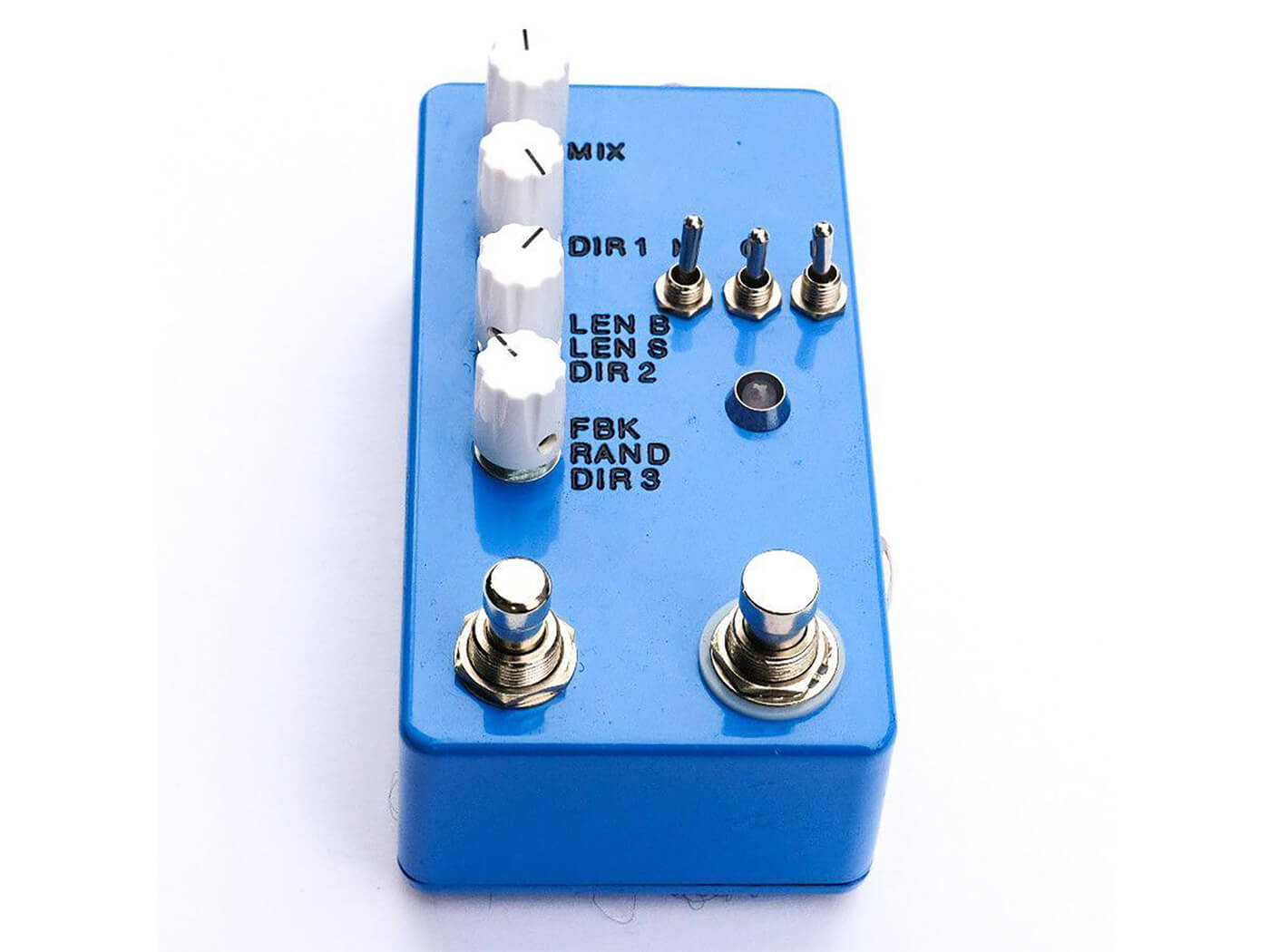
+ Charming lo-fi sounds right out of the box
+ Three discrete operating modes
– Some might want longer loop times
Is it a delay? Kind of. Is it a looper? Sure. Is it unique? Absolutely. The Count To Five by Montreal Assembly is a three-mode pedal, offering a delay and two flavours of slicing looper. The delay’s character is best described as ‘wild’, and depending on your setting almost immediately descends into completely un-guitar-like oscillation.
The looper also eschews long loop times in favour of soundscape-building experimentation. When in either of the loop modes, the ‘direction’ of the loop is controlled by a knob or an expression pedal. This operates a little like a speed control on a tape-machine looper, running the tape forward or backwards at a given speed, pitch-shifts and all. It’s a great example of complex results from simple rules – the sonic capabilities are downright mind-blowing, despite the simple face of the pedal.
Price: $225 (direct from Montreal Assembly)
Description: Speed/pitch-modulated
Controls: Mix, direction and multi-function length and feedback knobs, mode, Q and E toggle switches, tap tempo
I/O: Mono ins and outs, expression pedal input
Bypass: True bypass
Hologram Electronics Microcosm
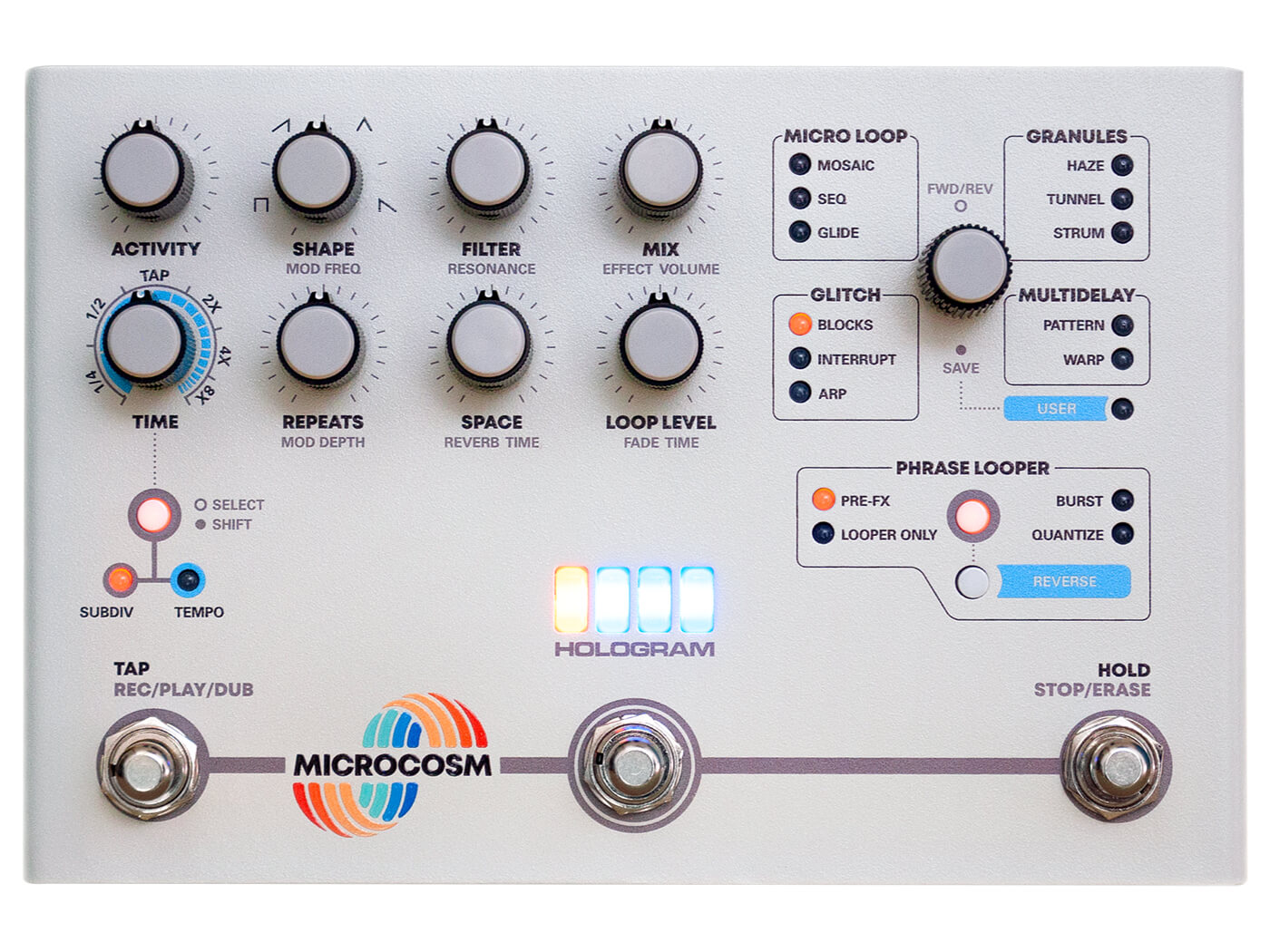
+ Huge amount of options and effects
+ Versatile operation with a lot of connectivity
– Control set might be overkill for some
The Microcosm is based around granular effects, that is, slicing your sound into tiny tiny pieces and reorganising them into loops and delays. The benefit? Well, once you get down to the time-scale we’re talking about here, sound becomes strongly abstracted from its source. Loops and delays sound less like you’re playing through an effect and more like you’re being accompanied by someone on an entirely different (and unknown) instrument. There’s a heavy focus on immersive soundscapes, something helped massively by its stereo operation. But the phrase looper can recreate your sound accurately, if you prefer.
The control set is, as you can see, extensive – you could set the pedal differently every day for a year and not repeat yourself – meaning that for those who enjoy knob-tweaking as they experiment with drones, loops and pads, the microcosm is pretty much perfect.
Price: $449 (direct from Hologram Electronics)
Description: Granular multi-effects unit with phrase looper
Controls: Effect selector knob, knobs for ‘Activity’, modulation shape and frequency, filter frequency and resonance, mix, delay time, delay repeats, reverb space and time, loop level and loop fade time, bypass footswitch, tap-tempo/rec/play/dub footswitch and hold/stop/erase footswitch
I/O: MIDI in/out/thru, clock synchronization, stereo input/output
Bypass: Switchable between buffered and true
Dr Scientist BitQuest
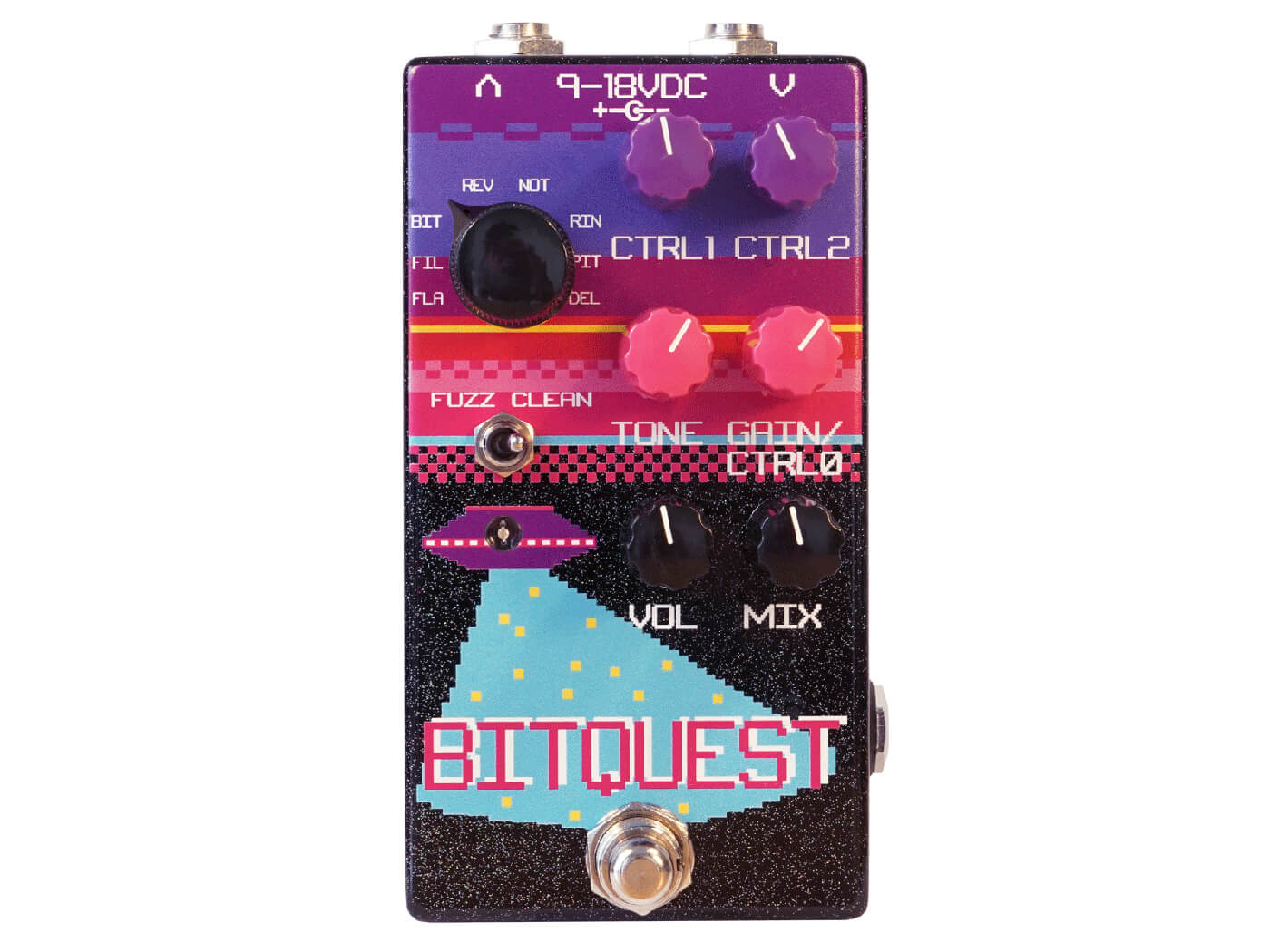
+ Eight effects, each of which has a lot of character
+ Clean/dirty switch doubles your possibilities
– Can’t chain effects together
Multi-effects pedals have never been so wonderfully lo-fi. On the face of the BitQuest you will find some universal controls for tone, volume and the like, as well as three controls which change their operation based on the current mode. A rotary switch selects from eight patches: a flanger, HP/LP filters, a bit crusher, an infinite reverb, a notch filter, a ring modulator, an octave effect and a delay. Each of these has a separate sound for clean and dirty modes, selected with a toggle switch, meaning 16 discrete effects are packed into this little box. Each effect in itself allows for some pretty extraordinary sounds, such as an infinitely oscillating reverb drone or an LFO-modulated sample rate.
Price: $249/£230
Description: Compact multi-effects pedal with eight patches
Controls: C Volume, tone, mix, three multi-function knobs that change operation based on current effect
I/O: Mono ins and outs
Bypass: True bypass
Empress ZOIA
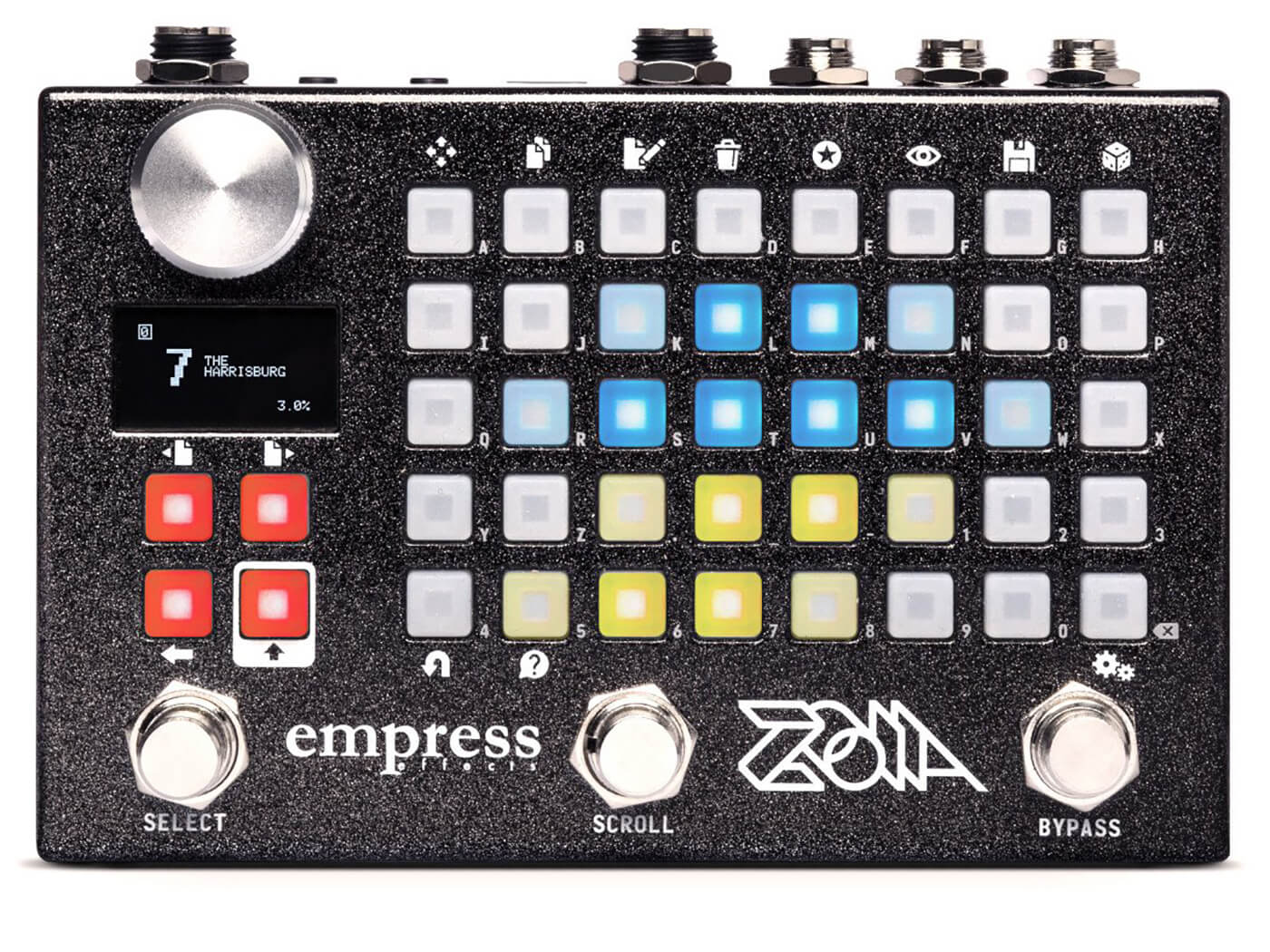
+ Obscenely powerful
+ Deep editing by default
– Expensive and steep learning curve
The Venn diagram of pedalboard lovers and modular-synth fans has a notable intersection for obvious reasons – putting together and rearranging your own signal path appeals to weirdos with a similar mindset, it seems.
The ZOIA takes a distinctly modular approach to a digital multi-effects unit: blocks are very simple, individual filters, signal routers, tone generators (yes, it can be used as an instrument in its own right), oscillators, VCAs and more that can be combined like circuit lego to create your own effects from the ground up. If that sounds like a lot of work, there’s a bunch of ready-made effects modules to load.
It’s also not just aimed at oblique, noisy experimentation. It’s got a studio-grade sample rate of 48kHz, with 24-bit conversion and 32-bit internal processing. You can also create and save up to 64 patches and easily recall them during a live performance.
Price: $499/£479
Description: Programmable modular multi-effects pedal
Controls: Button grid for editing, rotary/push knob for selection
I/O: Stereo ins and outs, MIDI in and out, control port
Bypass: Switchable between true and buffered
Bananana Effects MANDALA
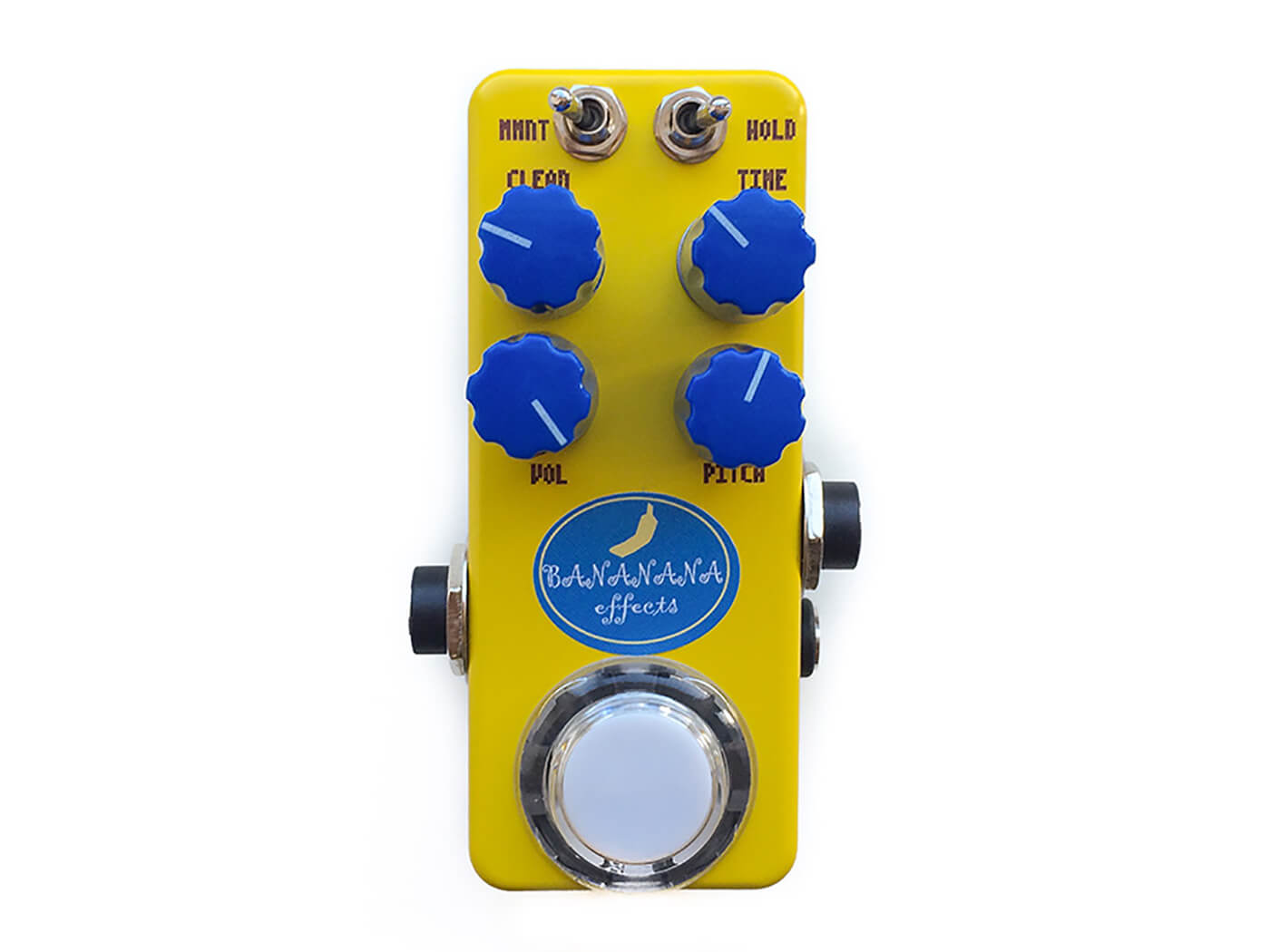
+ Multitude of sounds
+ Unique approach to digital glitchiness
– Some may find it hard to use musically
Do you remember what it sounded like in your headphones when you fell down the stairs wearing a portable CD player? Well, the Bananana Effects MANDALA goes some way to recreating what’s surely a fond childhood memory. It works by grabbing a short snippet of the last thing played, much like a delay, but then speeding or slowing down that sample and looping it with a number of caveats.
It works slightly similarly to the Hologram Microcosm, but on a much larger time scale and with much more abrasive results. Ramp up by a semitone every repeat? Why not. Play the loop backwards at half-speed for intimidating bass throbs? Go for it. There’s even a mode that transforms your sound into a glitchy square-wave setting, oscillating it as a drone when you’re not playing, and then capturing your next note as you play.
Price: $199
Description: Glitch-sampler with multiple modes
Controls: Rotary mode selector knob, multi-function ‘func’ knob, volume, sample time, kill-dry and latching toggles
I/O: Mono ins and outs
Bypass: Buffered bypass
Alexander Pedals Superball Kinetic Modulator

+ Can cover more traditional modulated delay sounds, and go weird at the press of a footswitch
+ LFO can be linked to any parameter
– Delay sound might be too ‘busy,’ for some
The original Super Ball was introduced in 1964, a superbly bouncy ball that could leap over whole buildings if thrown against the pavement hard enough. The same cannot be said for the Alexander Pedals Superball Kinetic Modulator. Throw it down onto tarmac hard enough and you’ll just really void your warranty. The best course of action in this case would be to buy another one and actually use it, as the Superball is a wonderfully oddball (ha!) delay: it features an LFO linked up to any parameter of your choice, as well as a resonant low-pass filter and clock time sequencing for odd pitch shifting noises.
The namesake is most evident in the operation of the left footswitch, which ‘bounces’ the LFO a set number of times, each bounce reducing the time of one cycle for some truly out-there sounds, depending on how you’ve set the rest of the pedal.
Price: £/$199
Description: Modulated delay pedal with ‘bouncing’ LFO mode
Controls: time, repeats, mix and filter knobs, ‘ctrl’ button to select different control modes for these knobs and adjust LFO operation
I/O: Mono ins and outs, footswitch input
Bypass: True Bypass
Death By Audio Total Sonic Annihilation 2
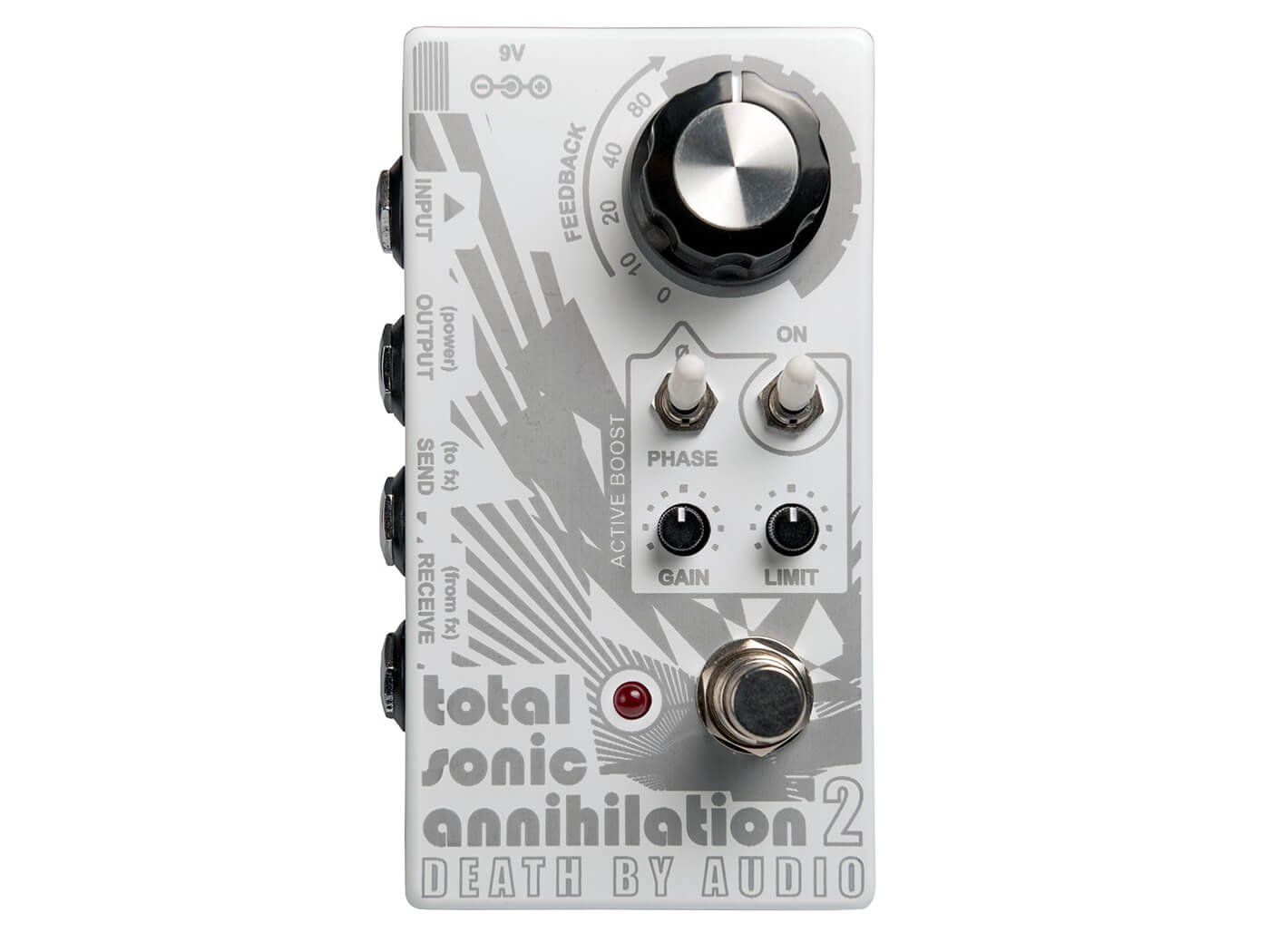
+ Its sound is determined by the pedals you use it with
+ Works with basically any effect
– Experimentation requires patching and un-patching
Even for the wonderfully experimental and noise-loving builder Death By Audio, this pedal is pretty weird. It’s designed to be used in conjunction with others, as it creates a controllable feedback loop for pedals you patch into it. And, it’s likely that if you’re in the market for one of these you’ll have a few other pedals lying around. Run a wah back into itself to multiply its filtering exponentially. Modulate your modulation pedals with themselves. Distort distortion. Add more than one pedal into the loop, and go absolutely off the rails.
Price: $250/£229
Description: Adjustable feedback looper
Controls: Gain and limit knobs, feedback knob, phase switch, feedback engage switch
I/O: Input, output, send, receive jacks
Bypass: True bypass
Snazzy FX Tracer City
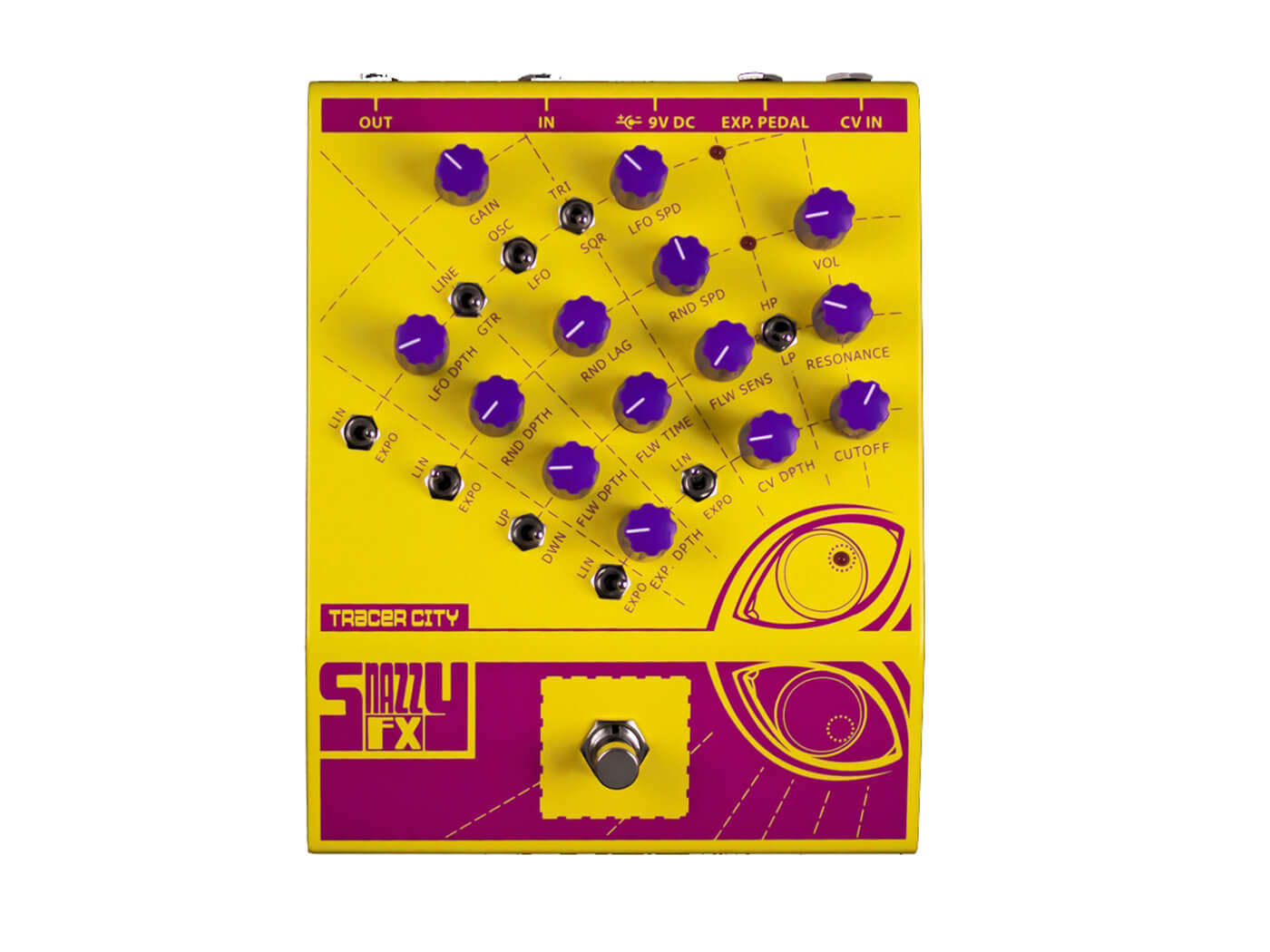
+ Massive amount of control and connectivity
+ Multiple operating modes
– Not exactly compact
Inside the hilariously large enclosure of the Snazzy Effects Tracer City is an incredibly powerful resonant filter bank, with extensive control over pretty much all of its parameters. It draws more from the tradition of modular synths than guitar-focused modulation effects such as phasers. As such the Tracer City has some interesting features such as two external CV inputs, synth-level headroom and an envelope follower mode for vocalising, auto-wah sounds. The resulting sonics, especially when combined with overdrive, fuzz or delay, are as out-there and as bold as the pedal’s visual design.
Price: $479.99/£399
Description: Analogue filter and modulation pedal
Controls: Knobs for overall gain, LFO depth, LFO speed, depth randomisation, random lag, speed randomisation, envelope follower depth, time and sensitivity, filter resonance, cutoff and volume, expression pedal filter depth response, CV depth response, toggle switches for linear or exponential knob operation, envelope follower direction, LFO waveshape, input impedance,
I/O: Mono ins and outs, expression in, CV in
Bypass: True bypass
ZVEX Fuzz Probe
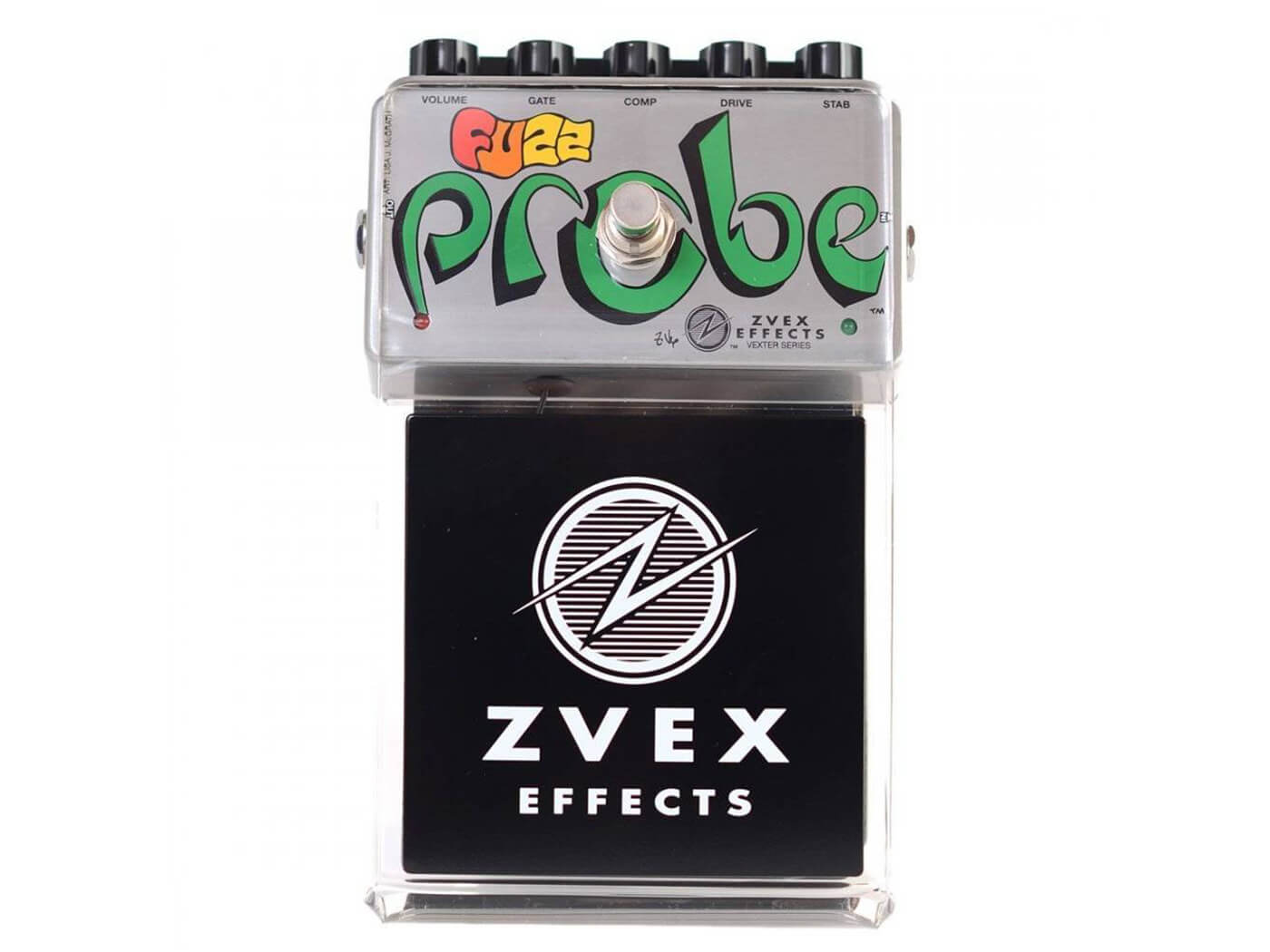
+ Literally everything is cooler with a theremin attached to it
+ Great fuzz tones, even without the theremin
– Could come across as gimmicky
There are few things that can’t be improved by combining them with a theremin, and the ZVEX Fuzz Factory is already a great fuzz pedal. Joining the controls for volume, gate, compression, drive and stab is a large pad that responds to proximity, hooked up to a filter adjusted by the Stab (stability) control. At subtle settings, it’s almost (very tentatively) like a fuzz-wah, only one you operate by hovering your limb of choice near, rather than with a rocker. At more extreme settings the pedal almost becomes an instrument in itself, as the fuzzy-filter’s resonance blasts out strange pitch-gliding signals.
Price: $369/$239 for the more affordable ‘Vexter’ version
Description: Fuzz pedal with on-board theremin
Controls: volume, gate, compression, drive, stability, theremin pad
I/O: Mono ins and outs
Bypass: True bypass
